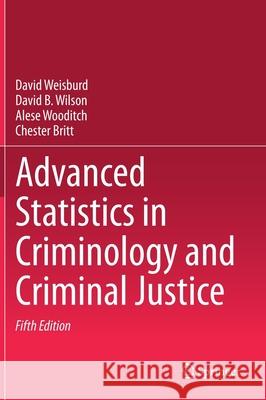Advanced Statistics in Criminology and Criminal Justice » książka
topmenu
Advanced Statistics in Criminology and Criminal Justice
ISBN-13: 9783030677374 / Angielski / Twarda / 2021 / 548 str.
Kategorie:
Kategorie BISAC:
Wydawca:
Springer
Język:
Angielski
ISBN-13:
9783030677374
Rok wydania:
2021
Wydanie:
2021
Ilość stron:
548
Waga:
1.17 kg
Wymiary:
25.4 x 17.78 x 3.17
Oprawa:
Twarda
Wolumenów:
01
Dodatkowe informacje:
Wydanie ilustrowane











